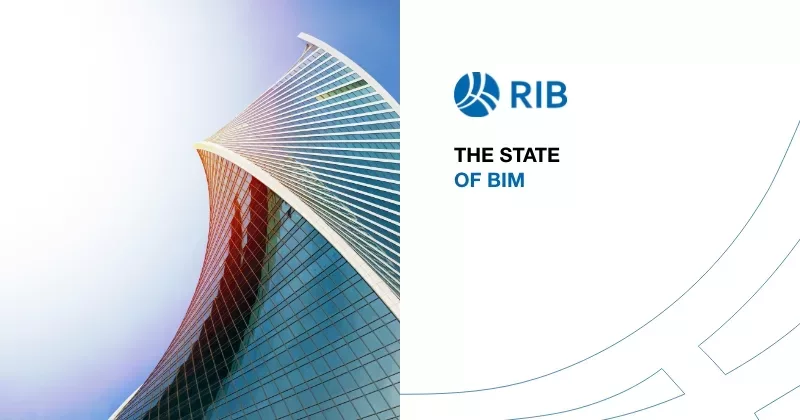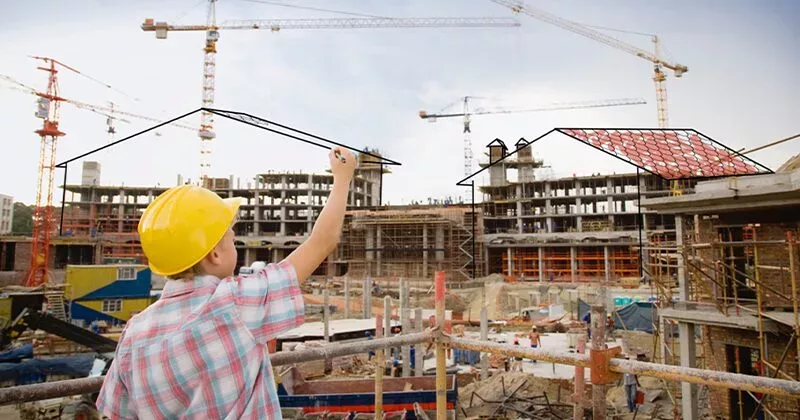11 mins read
Linking BIM with ERP: The Value for Construction Companies

We live in a digital age, and the pace of development is astonishing, if not alarming. You only have to take the mobile phone as an example of how we have gone from carrying a phone to carrying a fully functional messaging, internet, and communication tool in less than a decade. Add to that, other burgeoning technologies such as 3D printing, big data, virtual reality, and the power of the internet or social media, and it is clear we are living in a data-driven world.
In this fast-paced environment, there is a danger that established companies haven’t evolved their business practices to keep up, whereas newer companies, that emerged during this time, steal a lead in the market as innovators. Enterprise resource planning (ERP) was developed for this reason and is in full swing in most industry sectors.
That said, the rollout of construction ERP software has not been the smooth and seamless endeavor accomplished elsewhere. In the construction world, it is still not uncommon for businesses to run on siloed systems (non-integrated) with spreadsheets and paper trails attempting to link them together. But why? Why has the technology that has transformed other industries had a rough start in construction? The reason is probably a reluctance to change. Construction is one of the oldest industries in the world, with tried and tested processes that have brought success to organizations for decades. However, the time for change has come, and companies that haven’t jumped into digital transformation will simply stay behind.
ERP plays a crucial role in succeeding at construction digital transformation, as does integrating ERP systems with other groundbreaking technologies like BIM. In this blog post, we’ll explore BIM and ERP for construction and how integrating these two technologies can benefit businesses in the building sector.
Let’s dive in!
What is Construction ERP, and What is BIM?
Construction ERP is software that helps organizations manage their finances, operations, and project-related processes through automation, data analysis, and other digital construction technologies. These solutions help businesses streamline their operations for better outcomes at lower costs.
When defining ERP for construction, we must eliminate standard ERP solutions that work as more finance and HR-focused platforms for all industries. ERP for construction must be tailored to the industry and completely integrate all aspects, processes, and operations in designing, building, and maintaining the built environment. The construction industry is all about physical assets delivered through complex projects and not the distribution or movement of products, which traditional ERP systems are based on.
Building Information Modeling (BIM) is a work methodology that uses processes and software to create a 3D model of a construction project. The BIM model offers a single source of truth about the project with real-time data about materials, costs, schedules, and more to aid in the decision-making process. It also boosts collaboration between project stakeholders, as everyone can see the latest design and any changes made in real-time and from one location.
A few years ago, BIM’s scope was limited to the design and handover stages. Today, BIM enhances the entire project lifecycle to ensure faster and more budget-compliant delivery.
So, how can these two technologies work together to improve construction projects?
Construction Benefits of Linking BIM With ERP

Linking BIM with ERP significantly increases construction productivity and efficiency due to the extensive scope that can be covered through the synergy of the two. Integrating BIM’s visual approach and real-time data with ERP’s resource planning capabilities allows for more efficient resource allocation, budgeting, scheduling, and more by eliminating the gap between the theoretical design and the actual building phase, ensuring that everything aligns with what was initially planned. The results are centralized project management with integrated and up-to-date systems, allowing for increased efficiency and collaboration in construction projects.
True end-to-end project management
The powerful functionalities provided by ERP and BIM complement each other to create an accurate end-to-end construction management workflow. The integration of both systems ensures informational silos are eliminated by synchronizing data in real-time and using it to make decisions. It also eliminates common challenges from processes like construction procurement, budgeting, cost estimation, and more to ensure the project remains profitable.
Better risk management
BIM ERP integration allows for better construction risk management at the operational and organizational levels. BIM’s simulation capabilities and clash detection enable decision-makers to identify risks related to design and construction and find ways to mitigate them early. ERP systems can help monitor procurement, labor, and other operational risks affecting the project. Integrating both systems allows for a 360-degree view of risks, enabling the creation of smart mitigation strategies and contingency plans.
Increased collaboration and communication
Collaboration is at the center of BIM technology. The project’s 3D model serves as a shared informational hub for architects, engineers, designers, and other stakeholders to extract up-to-date data about the project. On the other hand, ERP also boosts communication between departments, such as procurement, finance, and human resources, for better organizational workflows. When the power of ERP and BIM systems are combined, the collaborative advantages are enhanced, ensuring the entire company has access to the latest data, reducing errors, and enhancing teamwork regardless of physical location.
Better cost control
Another benefit of ERP BIM integration is better cost management and budget control. The BIM model allows for accurate quantity takeoff and cost estimation during the project’s design phase. This data can then be fed into the construction ERP system, which tracks financial performance, to get a comprehensive view of all costs. This complete picture allows for real-time monitoring of expenses, identifying potential cost overruns early and mitigating their impact on the final budget, ensuring the project remains profitable.
Streamlined efficiency with fewer errors
Linking ERP and BIM helps to connect the design and planning stages with the execution and operational stages of a project for better efficiency. This integration eliminates informational silos, significantly reducing the risk of errors due to miscommunication. Plus, both systems’ automation features ensure that changes are reflected, keeping everyone on the same page.
Final Thoughts
As you learned throughout this post, BIM ERP integration brings transformative benefits to organizations in the construction industry. By merging the power of these two technologies, companies can benefit from end-to-end project management, better collaboration, streamlined workflows, and cost control. In today’s digitally driven construction industry, leveraging the strengths of both systems can represent a considerable advantage over competitors as resources are better utilized for more profitable projects.
At RIB Software, our extensive portfolio of innovative solutions weaves a digital thread throughout every stage of a building’s lifecycle – empowering your teams and transforming how you design, construct, and manage projects. Learn more about how we can solve your challenges and get a free demo today!
Most Recent
11 mins read
10 mins read
10 mins read
29 mins read
Blog Categories

Ebook











